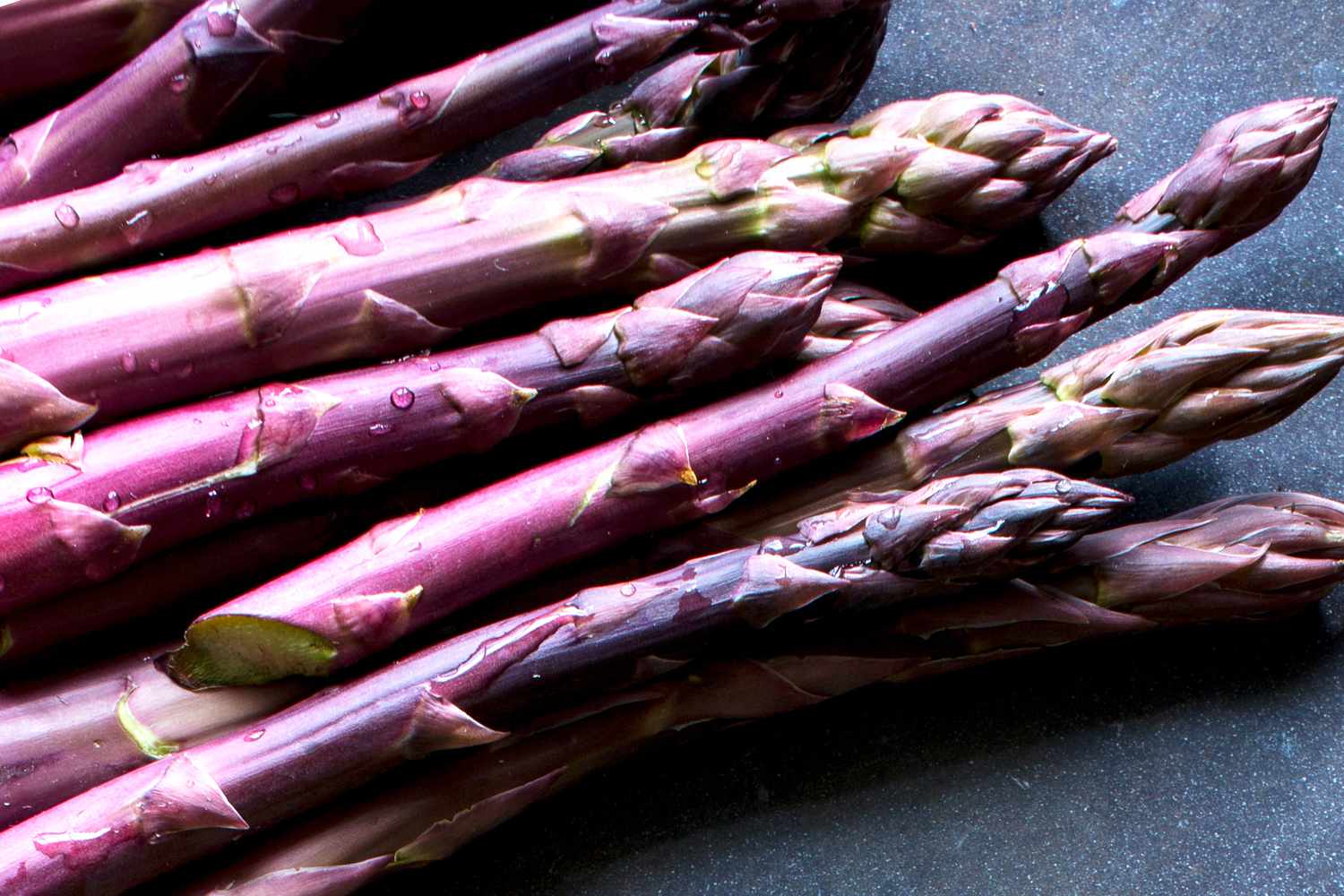
Purple asparagus might look like something out of a fairy tale, but it's very real and packed with surprises. What makes purple asparagus different from its green cousin? The answer lies in its unique color, which comes from anthocyanins, powerful antioxidants also found in blueberries. These colorful spears are not just pretty; they offer a sweeter, nuttier flavor and a tender texture. Perfect for grilling, roasting, or even eating raw, purple asparagus can elevate any dish. Plus, it's a nutritional powerhouse, rich in vitamins A, C, and K, fiber, and folate. Ready to learn more about this vibrant veggie? Let's dig in!
Key Takeaways:
- Purple asparagus is a colorful and sweet vegetable packed with vitamins and fiber, making it a healthy and tasty addition to any diet.
- This unique vegetable can be enjoyed in various ways, from raw in salads to grilled or roasted for a delicious and nutritious meal.
What is Purple Asparagus?
Purple asparagus is a unique variety of asparagus known for its vibrant color and slightly sweeter taste. Unlike its green counterpart, this type of asparagus offers a distinct flavor and a pop of color to any dish. Let's dive into some fascinating facts about this colorful vegetable.
Unique Characteristics of Purple Asparagus
Purple asparagus stands out not just because of its color but also due to its unique properties. Here are some interesting facts about its characteristics:
- Color: The purple hue comes from anthocyanins, which are antioxidants also found in blueberries and red cabbage.
- Taste: It has a sweeter taste compared to green asparagus due to higher sugar content.
- Texture: The stalks are generally more tender, making them easier to eat raw.
- Size: Typically, purple asparagus spears are thicker than green ones.
- Nutrient Content: Rich in vitamins A, C, and K, as well as folate and fiber.
Growing Conditions for Purple Asparagus
Growing purple asparagus requires specific conditions to thrive. Here are some facts about its cultivation:
- Climate: Prefers cooler climates but can adapt to various conditions.
- Soil: Needs well-drained, sandy soil with a pH between 6.5 and 7.5.
- Sunlight: Requires full sun for at least 6-8 hours a day.
- Watering: Needs consistent moisture, especially during the growing season.
- Spacing: Plants should be spaced about 12-18 inches apart to allow for proper growth.
Health Benefits of Purple Asparagus
Purple asparagus is not just tasty; it's also packed with health benefits. Here are some reasons to include it in your diet:
- Antioxidants: High in anthocyanins, which help fight free radicals.
- Anti-inflammatory: Contains compounds that reduce inflammation.
- Digestive Health: High fiber content aids in digestion.
- Heart Health: Rich in folate, which is essential for heart health.
- Weight Management: Low in calories, making it a great addition to a weight-loss diet.
Culinary Uses of Purple Asparagus
Purple asparagus can be used in various culinary applications. Here are some ways to enjoy this versatile vegetable:
- Raw: Can be eaten raw in salads for a crunchy texture.
- Grilled: Grilling enhances its natural sweetness.
- Roasted: Roasting brings out a nutty flavor.
- Steamed: Steaming preserves its nutrients and color.
- Pickled: Can be pickled for a tangy, crunchy snack.
Final Thoughts on Purple Asparagus
Purple asparagus isn't just a pretty face in the vegetable world. Packed with antioxidants, it offers a nutritional punch that can boost your health. Its unique flavor—sweeter and less bitter than green asparagus—makes it a favorite among chefs and home cooks alike. Whether you're grilling, roasting, or eating it raw, this veggie adds a pop of color and taste to any dish. Plus, it's easy to grow in your garden, making it accessible for anyone wanting to try their hand at gardening. With its rich history and health benefits, purple asparagus is more than just a trendy food item. It's a versatile, nutritious, and delicious addition to your diet. So next time you're at the market, grab a bunch and enjoy all the perks this vibrant vegetable has to offer.
Frequently Asked Questions
Was this page helpful?
Our commitment to delivering trustworthy and engaging content is at the heart of what we do. Each fact on our site is contributed by real users like you, bringing a wealth of diverse insights and information. To ensure the highest standards of accuracy and reliability, our dedicated editors meticulously review each submission. This process guarantees that the facts we share are not only fascinating but also credible. Trust in our commitment to quality and authenticity as you explore and learn with us.


